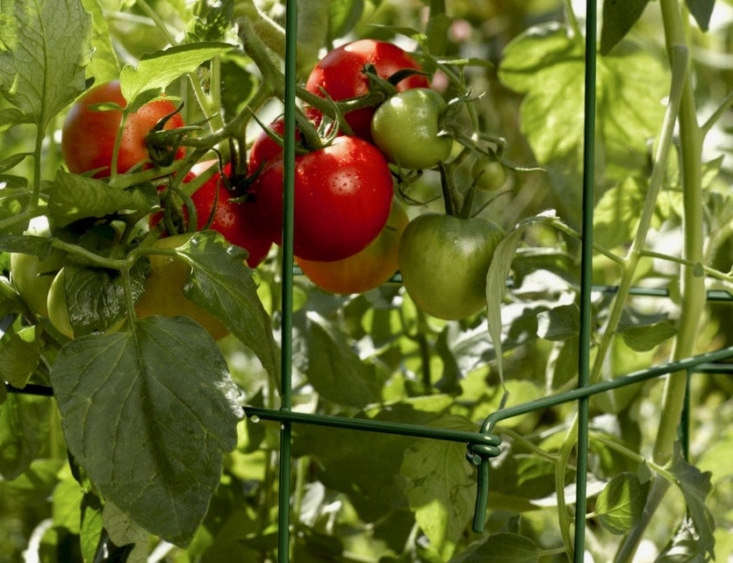Everybody knows a tomato is a fruit, not a vegetable, but do we know why? Horticulturally speaking, the answer is simple. True fruits develop from the ovary in the base of a flower and contain the plant’s seeds. This applies to the tomato—as well as to the avocado, squash, pepper, cucumber, eggplant, and even the olive.
Tomatoes are the most popular fruit grown in American gardens for a good reason. With more than 700 different varieties in cultivation today, there are many sweet options— from heirloom beefsteaks to plums to cherry tomatoes, and in colors from red to yellow to orange to striped.
How do you pick the best variety of tomato to grow in your garden? The answer to that question isn’t so simple. It depends on how much sun you get, how hot your garden is, how long the growing season is in your climate, and how big your garden is (or are you growing tomatoes in a container?).
Tomato talk can a bit daunting, but we’re here to make it easy. Keep reading for everything you need to know to about tomatoes.
What are the different types of tomatoes?

Determinate vs. Indeterminate

Determinate tomatoes are bushy, grow up to three feet tall, flower simultaneously, ripen fruit, and then die. Determinate tomatoes are sort of genetically preprogrammed to have a certain number of stems, leaves, and flowers—which means you know what you are getting.
Indeterminate tomatoes are more vine-like in structure and keep growing taller and taller and need caging or staking for support, and will continue to grow and set fruit until frost ends their life. Generally they produce later in the season than determinate varieties and give you robust crops over a longer period.
Heirloom vs. Hybrids

The battle is on to figure out which variety produces the easiest and tastiest tomato.
Hybrids are created when plant breeders cross-pollinate two different plant varieties with the intention of producing an offspring containing the parent’s favorable traits: dependability, disease resistance, better flavor, easy maintenance, early maturity, bigger yield, and set size.
Heirlooms, on the other hand, are typically pre-WWII varieties or at least 50 years old. Most heirlooms have had their seeds regionally passed down for generations. And despite the outcome being more variable, and sometimes a quirky appearance, some heirlooms exhibit an unbeatable flavor. The downside is that heirlooms are not as disease resistant as hybrids, so keep that in mind. Tip: Stake heirlooms so no leaves touch the soil and pick a variety that is known to thrive in your area. Research where a tomato comes from and then decide if your garden has similar growing conditions.
What is the best tomato variety to plant?

When choosing which tomato to grow, variables to consider include: growth habit, time to maturity, disease resistance, texture, and flavor. Specifically, make sure the tomato variety chosen will meet your expectations in the kitchen. If you want a tomato for paste, don’t plant a salad variety. Also factor in how much space you have and whether you want to use a cage (for indeterminate vining varieties) or not.
Tip: If you have limited growing space or will be growing in a container, consider a more compact determinate variety. Look for names that include the words mini, patio, or dwarf. Determinate varieties are also a smart choice for colder climates, where you need to harvest an entire crop within a few weeks. On the other hand, if you are fortunate to have space, or prefer to harvest over a long period and are geared up to provide sturdy, supportive cages or stakes, then an indeterminate variety is what you should be looking for.
I suggest growing both hybrids and heirlooms because by mixing tomato types you are spreading the wealth of a harvest over the longest season. Plant determinate or early indeterminate tomato varieties for early summer tomatoes, and salad or beefsteak tomatoes for mid- and late-summer harvest.

Tips and Tricks
- For healthy growth, tomato plants require at least six hours of direct sunlight a day to produce fruit, and eight hours of sun for a bigger harvest.
- Always mulch beneath your plants because if water splashes soil onto plants, soil pathogens to transfer to the leaves.
- Best mulch? Wheat straw, because it is easy to find and is inexpensive. Avoid hay because it has seeds that will germinate.
- Choose a tomato support that will accommodate a fully grown plant. A flimsy, thin gauge support will topple under the weight of a mammoth Sungold variety.
- Start pruning tomato plants when they are one to two feet tall. When suckers appear, the simplest is to pinch it off entirely while still small.
- Determinate tomatoes need little pruning other than removing suckers below the first flower cluster.
See more growing tips at Tomatoes: A Field Guide to Planting, Care & Design. Read our curated guide to Edible Plants 101 for companion plants that get along well with tomatoes, including Basil, Carrots, Nasturtiums, and Calendula.
It’s not too late to plant a summer edible garden. Read more:
- Everything You Need to Know About Edible Gardens
- 10 Secrets for Growing an Urban Balcony Garden
- Landscaping 101: Biodynamics for the Edible Garden










Have a Question or Comment About This Post?
Join the conversation